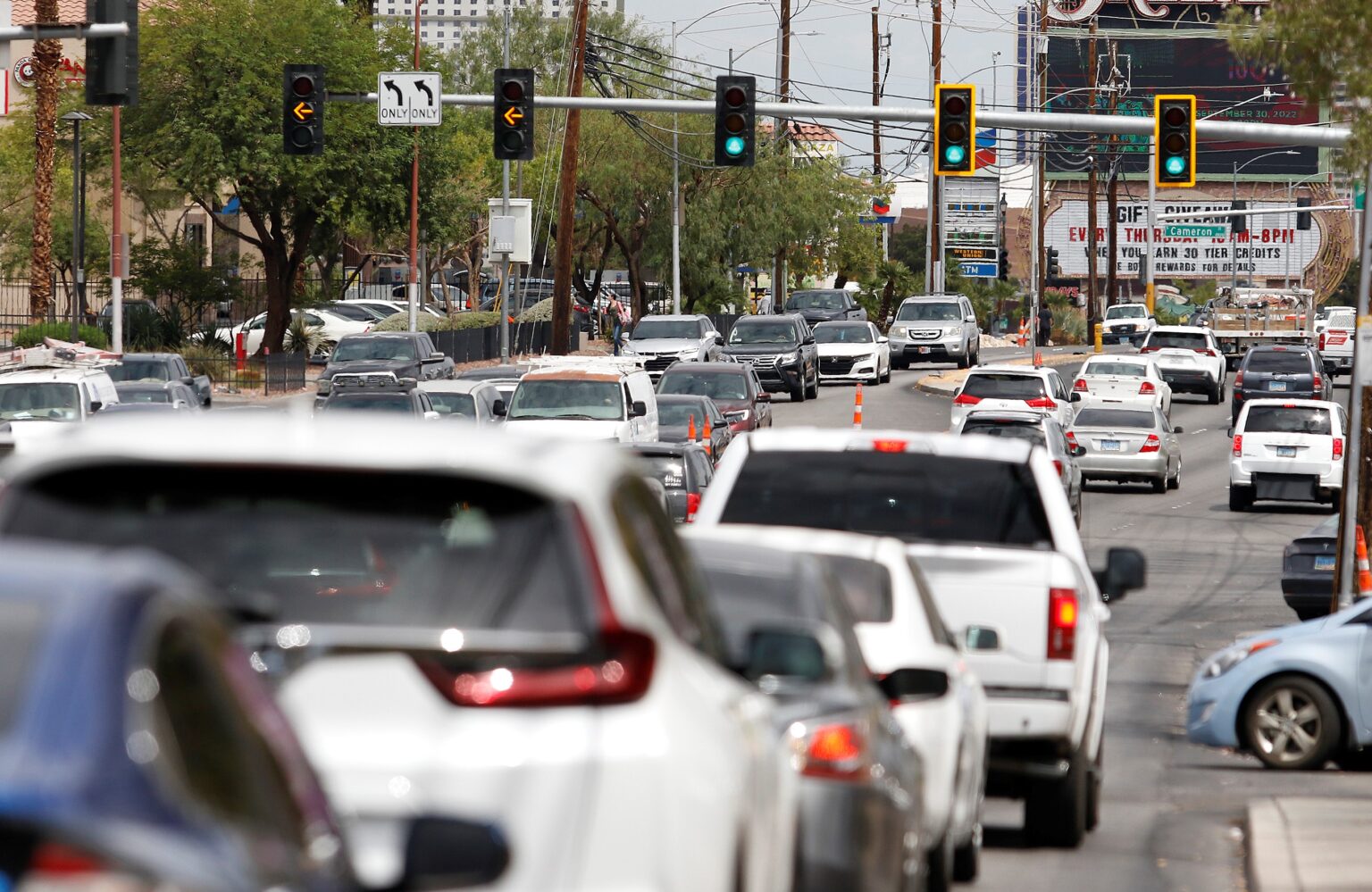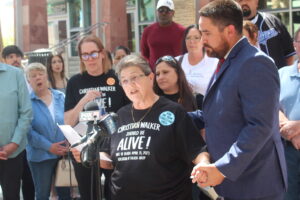5:49
News Story
State lawmakers urged to consider authorizing automated traffic enforcement
The Nevada Advisory Committee on Traffic Safety urged state lawmakers Wednesday to consider legislation authorizing the use of speeding and red light cameras.
Critics warned automated ticketing of motorists via photos singles out populations, and can become more of a revenue model for governments and system vendors than a solution to traffic safety.
Lawmakers during Wednesday’s interim Growth and Infrastructure Committee meeting were briefed on the increased number of traffic deaths in recent years, in particular among pedestrians, and ways to reduce fatalities and safety issues.
The traffic safety committee recommended legislative changes to allow jurisdictions to consider using automated traffic enforcement, which allows for law enforcement to issue traffic tickets by using cameras to catch motorists who are speeding or running red lights.
Leisa Moseley-Sayles, the Nevada state director of the Fines and Fees Justice Center, said there are limits that “support the claim that these cameras significantly enhance road safety.”
The use of the cameras, she said, leads to higher traffic citations that “throw more people into the criminal legal system and are known to exacerbate poverty, perpetuate racial disparities.”
Both the traffic safety committee and the Fines and Fees Justice Center agree any policy should emphasize transparency and not become a tool for raising revenue from citations instead of a means of enhancing safety.
Amy Davey, administrator of the Nevada Office of Traffic Safety within the Department of Public Safety, said enacting automated enforcement would be a stopgap and not intended to be “the end all be all.”
“If you leave (cameras) there forever in one spot, people avoid that spot then you have a high crash area somewhere else because they are now taking a different route,” she said. “ It definitely shouldn’t become a prop for any type of revenue for local jurisdictions or state jurisdiction.”
Nevada state lawmakers banned the use of speed and red light cameras in 1999.
“It was a bipartisan bill that passed the Senate with two no votes and passed the Assembly unanimously,” said Nick Shepack, the Nevada deputy directory of the the Fines and Fees Justice Center. “Much of the same concerns we have today were discussed during those hearings when this bill passed.”
Nevada is among 22 states that don’t allow automated traffic enforcement, he said.
Assembly Bill 93, a Growth and Infrastructure Committee bill introduced in the 2023 Legislative Session, proposed installing automated traffic cameras in school zones. The legislation didn’t receive a hearing.
Davey said there has been a “pretty steep increase in traffic fatalities,” in recent years, adding that in 2021 there were 385 traffic deaths, which jumped to 416 deaths in 2022. There were 91 pedestrian deaths in 2022, an increase from 84 the year prior.
There is also an increase in people who have been hit by cars and survived, she added, with a large number of children being hit in school zones.
“Clark County School District is reporting that 98 students have been struck this school year in school zones,” Davey said. “Washoe County is reporting that 64 school aged children have been struck in school zones this school year.”
Though past legislative attempts have failed, Andrew Bennett, the chair of the traffic safety committee, who also works at Clark County Office of Traffic Safety, said lawmakers should still consider eliminating the current Nevada law “that limits local and state agencies abilities to use road safety cameras.”
Other recommendations the traffic safety committee proposed included increasing fines in school zones or enacting a primary seat belt law, which allows law enforcement to stop drivers for not wearing a seat belt even if there aren’t other traffic violations.
Discriminatory ‘revenue generators’
The use of automated traffic enforcement has earned criticism for disproportionately ticketing communities of color and disadvantaged populations.
Shepack said research in the District of Columbia showed drivers in “predominantly Black areas were over 17 times more likely to receive a violation.”
“We are also deeply concerned these cameras can too easily become revenue generators, because in reality they serve as significant sources of revenue for both the municipalities that employ them as well as the vendors that manufacture and install them,” Moseley-Sayles said.
Data on automated enforcement, they added, doesn’t indicate a reduction in traffic and pedestrian deaths.
If the answer is to eliminate or reduce traffic fatalities, “then the structure and function of Nevada’s streets and roads must be brought in line with the goal of infrastructure investments,” Moseley-Sayles said.
That could include investment in other “traffic calming methods such as speed bumps, raised sidewalks and traffic circles,” she said.
“Having mechanisms in place that slow drivers down immediately, rather than delayed citation in the mail, it seems like that would be more effective,” she said.
If lawmakers were to move forward, Shepack said they should consider less punitive sanctions, such as warnings and driver safety classes on the first offense. Citations should also take into consideration people’s ability to pay.
Lawmakers should also restrict vendors contracted to install traffic cameras from having any power to enforce or prosecute, he added.
“This may seem like a no-brainer, but there are contracts that exist where terms of enforcement and right to prosecute individuals are given directly to private companies,” he said.
While encouraging lawmakers to consider automated enforcement, Bennett, the traffic committee chair, told lawmakers that “it is vital to learn from the mistakes of others” that have used speeding and red light cameras.
“The journey of automated traffic enforcement implementation in other communities has not been without fault,” he said. “By examining the pitfalls that others have encountered, we can navigate the implementation process more smoothly ensuring our approach is both effective and publicly acceptable.”
Shepack pointed to California as an example. The state passed legislation last year to implement a pilot program to allow certain jurisdictions with larger populations to set up speed cameras.
The bill, he said, came with strict requirements, including only allowing for cameras to operate in school zones during hours children were present and mandating revenue collected from citations go toward “street calming infrastructure with the goal of removing cameras.”
There is also a mandatory review process and cameras must be removed if data doesn’t show a reduction in safety issues.
Moseley-Sayles recommended at least waiting for some results of the California program before Nevada moves forward.
Our stories may be republished online or in print under Creative Commons license CC BY-NC-ND 4.0. We ask that you edit only for style or to shorten, provide proper attribution and link to our website. AP and Getty images may not be republished. Please see our republishing guidelines for use of any other photos and graphics.




